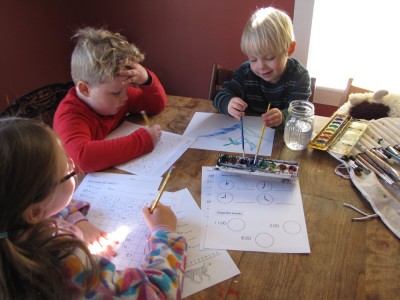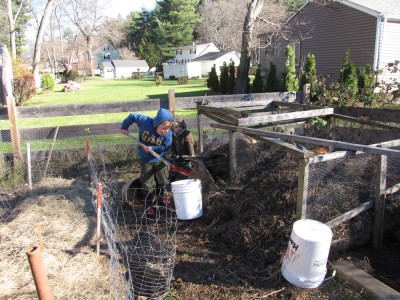fearless education
There are good things about public schools. It's great for kids of different backgrounds to be together, curriculum coordinators and adventurous teachers come up with great learning activities, and the Common Core standards have some solid ideas about helping kids really understand math. But beneath all that, there's a problem: at its heart, the whole operation is driven by fear.
The other day I was passing by the Waldorf School in Lexington around mid-morning, and I had to pause on the bike path to let a class of first- or second-graders cross from the conservation land behind the school back onto school grounds. It was a chilly day, but they were all well-bundled up and seemed happy enough to be outside enjoying the November sunshine. As I understand it, all the classes at the school spend time outside every day. That would never fly in the public school.
For one thing, the kids might get cold! Kids being cold or wet is a huge concern of public school educators in the suburbs, and most of them are quite happy to disappoint kids' hopes of playing in puddles—or even going outside at all—in order to save them from the dangers of the elements. And even teachers who think that wet feet are their own reasonable deterrent hesitate, less they incur the wrath of parents. Would most parents be particularly upset to have a kid come home still damp? I expect not; but one might be. And that's enough to shut down any puddle fun across the board, and all spring the cry of "Stay out of the puddles!" echoes across Massachusetts schoolyards.
And then of course there's the concern that, if kids are outside—even to "take regular nature walks and observe the daily and seasonal changes in the natural environment"—they'll be missing vital pedagogical opportunities. We're not going to catch up with Singapore if we're wasting time in nature! As is the case with the fear of weather, it's not clear who first decided that first grade would set the academic tone and decide if a student would be able to gain admission to a prestigious college... but now everyone seems to think that. So there are no more toys in first grade rooms, except those to use during the 20 minutes of indoor recess a day kids get when it's colder than 25 degrees or so.
As it is now, no one seems able to step back and take a deep breath and realize that, provided the right circumstances, kids really like learning.
And I understand how seductive fear can be. I fall prey to it in my own teaching, and when I think about what I'd do if I were in charge of educating a whole town's worth of kids—or even a dozen at a time—I start to have "responsible" fears about how ready the average child is to make their own educational decisions. That's nonsense, just like it's nonsense to think that eight-year-olds can't be trusted to decide whether they're cold or not. As educators, our job should be to accept kids as they are, and do the best we can to make learning appealing: not forcing facts and methods into kids' heads, but creating an environment where they can explore what interests them and make their own educational path.
It's possible that doing that on a large scale would be a disaster, or even that I won't be able to manage it for our tiny farm-school co-op. But maybe it can work... and I'm not afraid to try!
Especially when I get free farm work out of the deal!

